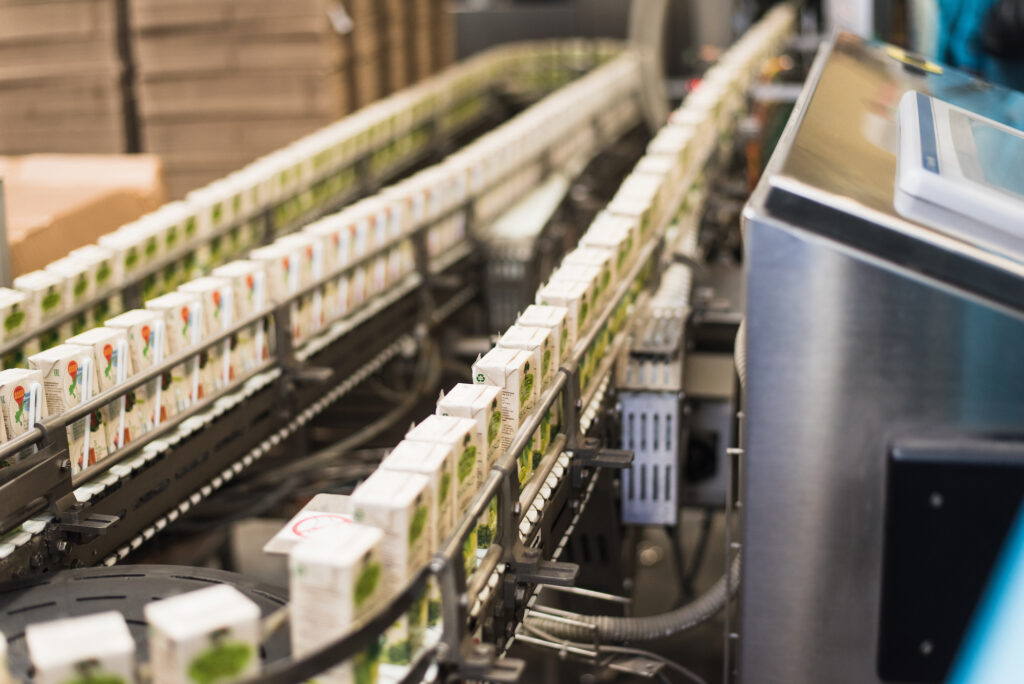Americans consume a lot of food. Today’s consumers are accustomed to having their food packaged and sold in a measured and safe way. The food packaging market was valued at about 301.3 billion in 2020 and is growing. Some people have wondered, however, what this might mean for the environment and how manufacturers can be more conscious or careful about the waste they produce and how they dispose of it.
We touch on this topic in this post.
Conveyors & Materials Handling specializes in conveyors and product handling solutions headquartered in El Paso, Texas, and supports manufacturing across the region, including throughout Texas and Mexico. Call us to learn more about our services.
The Wide Scope of the Food Packaging Industry
Today’s casual supermarket shopper might not realize the far-reaching scope of the food packaging industry and how much goes into it. In order to provide convenient, safe, and shelf-stable food, packaging is essential, so there must be sufficient material and specialized packaging systems.
Unfortunately, many food packaging is meant to be single-use and cannot be recycled or repurposed in any way. This high production of plastic has caused issues in the environment that some people have started to draw attention towards.
Food packaging can often end up in waterways and other bodies of water, beaches, or on our streets. So, as people raise awareness about this issue, the food packaging industry has made some adjustments and sought to find more environmentally friendly and sustainable alternatives and options.
What Materials Does the Food Packaging Industry Use?
To keep our food neatly packed, easily transported, and easily stored, the food packing business must come up with the most efficient and effective ways to package food. One big component of this is the types of materials used.
The top materials used include:
- Metals: A large percentage of our packaged food comes in metal-based containers or packaging. These include cans, tubes, films, or containers. Food and beverages are often packaged in cans that are made of aluminum or steel.
- Paper: Various kinds of paper can be used to package food and can include corrugated boxes, paper pales, cartons, sacks, cups, bags, or tubes. Paper has several qualities that make it a useful packaging material including the fact that it can tear effortlessly along fibers and has good durability.
- Glass: Another popular packaging material is glass. It has been used for centuries, as people discovered its utility even back in the Roman empire. This is a dependable and non-toxic material for food and beverages.
- Plastics: One of the most well-known and commonly-used materials is plastic. It can be used for bottles, bowls, trays, cups, bowls, and more. Plastic is relatively inexpensive to manufacture, it’s lightweight, and used for various types of food. Some of the health concerns related to plastic, however, can be one of the most often cited cons of using the material, as well as having it affect the environment.
The Single-Use Food Packaging
As mentioned above, most food packaging today is only meant to be used once. After that, people discard it. The U.S Environmental Protection Agency stated that the materials from discarded food packaging make up about half of all municipal solid waste. In 2018, that was about 82.2 tons.
The manufacturing process of food packaging itself generates plenty of greenhouse gasses, heavy metals and particulates, and wastewater or sludge. Below are some of the challenges faced by the food packaging industry:
- Production of greenhouse gasses. In glass manufacturing, for example, emissions such as sulfur oxides, nitrogen oxides, and more result from the combustion of fuels. When producing plastics, manufacturers use different types of plastic polymers derived from fossil fuels. Plastics require the use of natural gas or crude oil refining.
- Waste production. Manufacturers produce aluminum by mixing bauxite and alumina. The process requires a lot of energy and creates waste products such as greenhouse gasses, dust, polycyclic aromatic hydrocarbons, and wastewater.
Pollution from Discarded Food Packaging
Perhaps the most pronounced effect that food packaging has on the environment, however, is the effect that results from pollution. Most packaging is discarded and ends up in the landfill or is thrown about the streets and ends up in parks, waterways, beaches, etc.
One of the most well-known consequences of plastic pollution is the frequency with which this material ends up in the oceans and disturbs marine life. At the same time, the plastics often end up in the soil or polluting freshwater sources. The problem is that plastics can absorb toxic chemicals and make their way through water sources or food sources and end up consumed by humans.
Use the Right Process and Do Your Part for the Planet
A lot of these issues have solutions and have slowly improved thanks to public knowledge about the harms of pollution. Nevertheless, if you are in the food packaging industry you can do your part by ensuring you have an efficient process and are using the best materials.
Conveyors & Materials Handling specializes in the equipment used in food handling and has helped El Paso and the surrounding area clients increase their energy efficiency and productivity by employing the right equipment. We also have locations in Houston, Dallas, and Mexico.
Want to learn more about what we have to offer? Call Conveyors & Materials Handling today.
